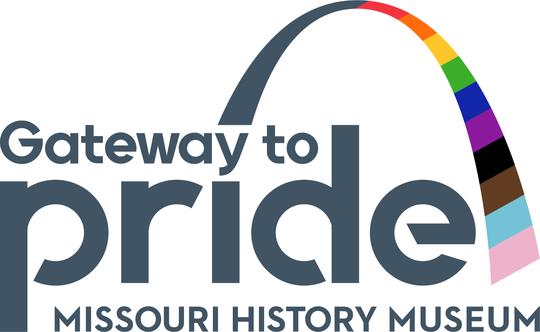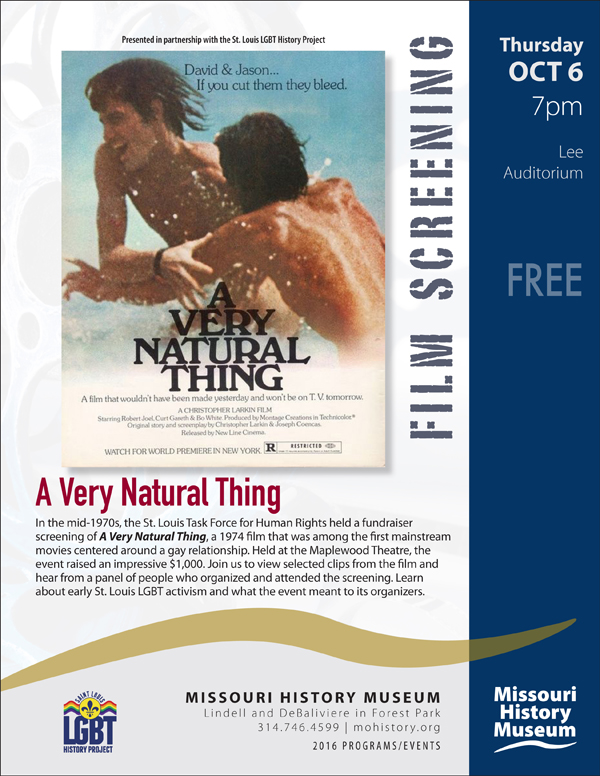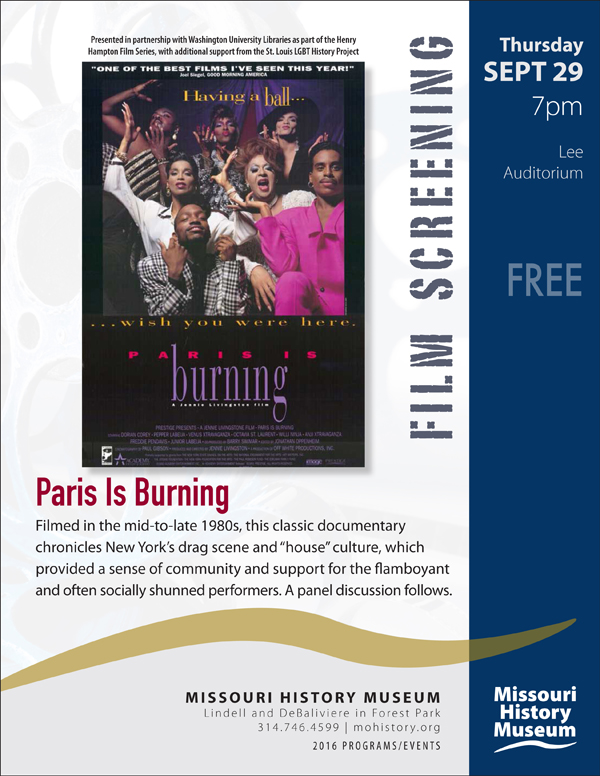Mapping LGBTQ St. Louis

By Miranda Rectenwald
October 3, 2016: As LGBT History Month begins, here is an overview of a new way St. Louis is tracking its local LGBTQ history. Mapping LGBTQ St. Louis is an interdisciplinary humanities project that centers on the LGBTQ experience with the divided city. Between spring 2016 – spring 2017 students, researchers, faculty, archivists, librarians, and interested people from the St. Louis-area are gathering historical information about places connected to people in the queer* community from 1945 – 1992. Then the information will be organized and the mapping tools of GIS used to show addresses and sites on a digital map (think google maps – but with history). The initial set of data and public interface is anticipated to debut in March 2017.
This project began with a 2016 grant proposal by librarian Makiba Foster and faculty member Andrea Friedman, Associate Professor of History and Women, Gender, Sexuality Studies, as part of the Center for the Humanities Divided Cities Initiative. Community partners also include the Missouri History Museum and the St. Louis LGBT History Project. The project follows in the footsteps of similar projects, such as the ONE Archive’s California Pride and Globaltraqs.
The original grant proposal included the following description: Through an examination of queer uses of space within the built environment, we will explore how sexuality divides cities and how urban spaces are implicated in the division of queer communities around race, gender, and class. Using GIS mapping to visual document these sites of transgression in historical time and space, the project will identify patters of sexual segregation, analyze how these reflect, reinforce and reproduce other axes of division, and ask what we can learn about the possibilities of resistance in the urban landscape. The final product – an interactive map available to the public via a digital portal – will allow a board audience access to the social uses of space in postwar (1945 – 1992) St. Louis, using artifacts and archival materials as well as information about historical context to bring alive the experience of living in a city divided by sexual identity and practice, gender, race, and socioeconomic status.
Project organizers include: From Washington University: Andrea Friedman, Associate Professor of History and WGSS; Makiba Foster, research consultant (former Curator of Oral History and WGSS Librarian); Aaron Addison, Director of Scholarly Services WU Libraries; Jennifer Moore, GIS & Data Projects Manager and Anthropology Librarian; Bob Hansman, Associate Professor School of Architecture; Miranda Rectenwald, Curator of Local History. From Community Partner organizations: Sharon Smith, Curator of Civic and Personal Identity, Missouri History Museum; Chris Gordon, Director of Library & Collections, Missouri History Museum; Steven Brawley, St. Louis LGBT History Project; Ian Darnell, Ph.D candidate University of IL, Chicago.
This summer (2016) the project focused on locations of social interaction such as hang-outs, bars, taverns, clubs, and other gathering sites in the city and county of St. Louis, plus eastern metropolitan areas in Illinois.
Keep up with the project via this blog.
Story adapted from July 5, 2016 blog post.
Image coutesy of St. Louis LGBT History Project.
My CWE History
 By Jason Wilson
By Jason Wilson
September 10, 2016: A little personal history. I first encountered the Cenral West End (CWE) in 1968, I was a totally suburban Junior in high school, a real "county kid" I knew of the CWE, then known more by the name "Euclid" as that was where all the action was, at least when taken shopping as a small child by my grandparents who lived in Clayton. However, this was on my own. I knew who and what I was. and was seeking out others. With a high school friend who was much more "out' at the time, we explored the possibilities and came across such social gathering spots as "The Cannon" in Forest Park. We were just another two skinny suburban teens. Nothing special, but we were instantly accepted.
If was a good feeling. Now this is important. we were not running from any hate, or abuse, we had many friends in school and around home...Some of whom knew we were gay....Or queer, as was used more freely by the straight world, then. We wanted more, we wanted to know there were others like us. The CWE showed us there were. Still had to be covert about a lot of things when in the public. Most folks just thought us just a couple more hippies, into drugs and free love... well, yeah. but the free love we had in mind would have had them clutching their pearls. We had gotten high out in our western county suburban world, but to be able to actively cruise, even with the veneer of discreteness necessary at the time, was an awakening. I was interested in older men... not more than a few years older, though, college guys.
My friend seemed a bit more open to any age.....When I was accepted as a student and started attending a university in September of 1969. Yep, I graduated from high school in 69. We had a ball with that number, you bet. I moved to the CWE. The whole urban experience was mind boggling. After graduation in 1973, I moved to a 1930s stone house out on Conway near 141 (Woods Mill) to start my self prescribed suburban adult existence, with a male friend as a roommate. ONLY as a roommate. two years later I was looking with another friend for a place in the city. we found an old Edwardian on Hickory in Lafayette Square and moved into it in the Spring of 1976.
The stories and adventures and my finally being settled with myself all made the years in the Square rather memorable. It was there I went full gentrification. And became a full fledged "guppie" Even the pin striped suit, and an Audi. But still had the below shoulder length hair. (always) screaming guitar out the second story windows.....Some folks actually thought I was straight when they met me....Usually didn't take long to ''ahem"...set them straight. All in all The environment of the "Gayborhood" of both the CWE and "The Square" both helped me a lot....I don't know how young LGBT folks deal today, likely due to social media it is easier to connect and like shopping, they don't need "brick and mortar" formats to meet. I just hope they are aware of what all of us had to do to get our community to where we are today....And like evolution that job will never be complete.
Photo courtesy Jason Wilson.






